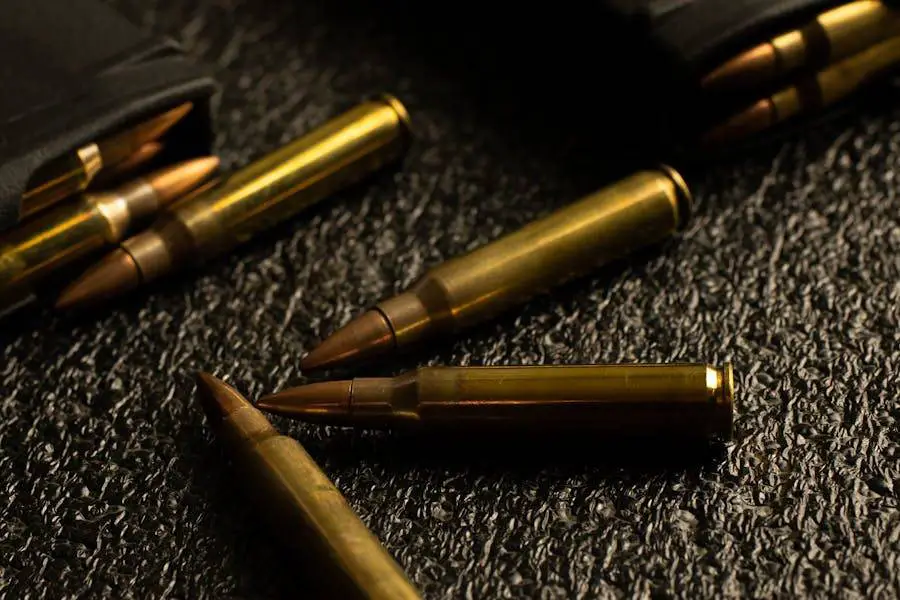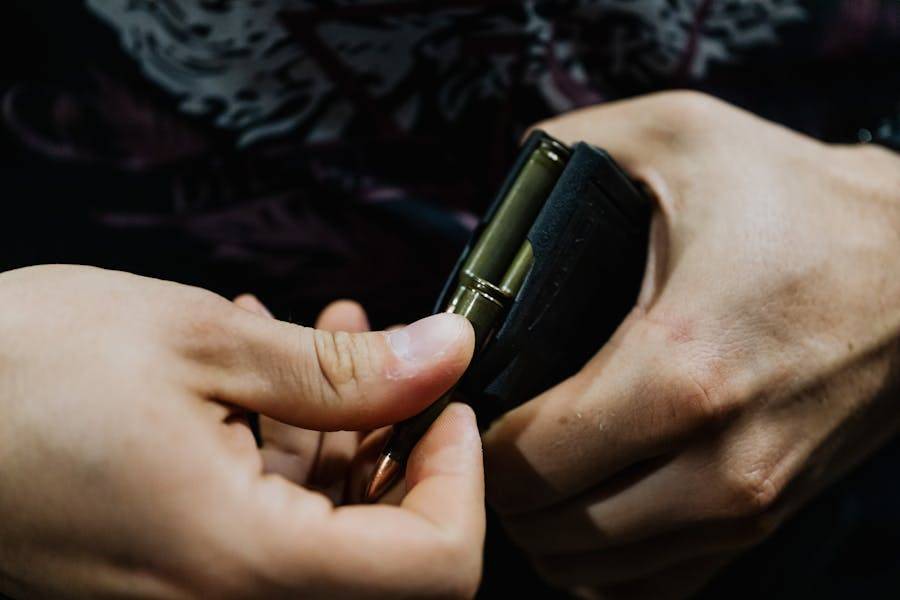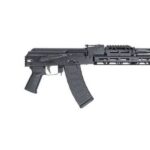Table of Contents
The .260 Remington (.260 Rem) and the .308 Winchester (.308 Win) are two of the most popular cartridges among hunters, competitive shooters, and tactical professionals.

Each cartridge offers unique advantages and has developed a loyal following.
This comprehensive comparison will delve into various critical aspects to help shooters understand how these cartridges stack up against each other in terms of ballistics performance, recoil and handling, ammunition availability and cost, and much more.
History and Development
Origins
The 308 Winchester was introduced in 1952, quickly becoming a staple for hunters, military, and law enforcement due to its versatility and performance.
Its roots trace back to the .300 Savage, aiming to mimic the .30-06 Springfield performance in a shorter case.
On the other hand, the 260 Remington, which debuted in 1997, was developed from the 6.5mm-08 A-Square, a wildcat cartridge popular among competitive shooters.
The 260 Rem aimed to provide superior ballistics with less recoil, making it attractive for long-range shooting and hunting.
Evolution Over Time
Over the years, both cartridges have evolved, with advancements in bullet technology and powder formulations enhancing their performance.
The 308 Win has maintained its popularity due to its widespread adoption by military and law enforcement agencies worldwide.
Meanwhile, the 260 Rem has carved out a niche among precision shooters and hunters who value its flatter trajectory and reduced wind drift.
Ballistics Performance
Trajectory
The .260 Rem, with its slimmer, more aerodynamic bullets, typically offers a flatter trajectory compared to the .308 Win.
This characteristic becomes increasingly advantageous at longer ranges, where the .260 Rem’s superior ballistic coefficient helps it resist wind drift and retain velocity better than the .308 Win.
Energy and Velocity
While the .308 Win generally launches heavier bullets, which can result in higher energy levels at shorter ranges, the .260 Rem maintains its energy better over distance.
This is due to its bullets’ higher ballistic efficiency, which translates to sustained velocity and energy at long range.
Recoil and Handling
Recoil Impact
The .260 Rem usually produces less recoil than the .308 Win, making it more comfortable for extended shooting sessions.
This reduced recoil also aids in maintaining sight picture between shots, crucial for precision shooting.
Rifle Weight and Ergonomics
Rifle configurations for both cartridges can vary widely, but the inherent recoil characteristics can influence stock design and rifle ergonomics.
Lighter rifles are feasible with the .260 Rem due to its lighter recoil, potentially enhancing portability and handling in field conditions.
Ammunition Availability and Cost
Factory Ammunition Choices
The .308 Win enjoys broader factory ammunition availability, given its longer history and widespread adoption.
In contrast, the .260 Rem offers fewer choices, though quality options are available for both hunting and match purposes.
Price Comparison
Ammunition for the .308 Win is generally more affordable and widely available than for the .260 Rem. This is partly due to the .308 Win’s military heritage, which has led to economies of scale in production.
Barrel Life and Maintenance

Expected Barrel Life
The .308 Win typically offers a longer barrel life compared to the .260 Rem.
The latter’s higher velocity and smaller bore diameter can accelerate throat erosion, reducing barrel life under similar shooting conditions.
Maintenance Requirements
Both cartridges require regular maintenance for optimal performance, but the .260 Rem may demand more frequent attention to the barrel to mitigate the effects of faster wear.
Rifle Platform Compatibility
Bolt-Action Rifles
Both cartridges are well-suited to bolt-action rifles, with numerous manufacturers offering models chambered in both calibers. The choice often comes down to personal preference and intended use.
Semi-Automatic Platforms
The 308 Winchester has a significant presence in the semi-automatic platform market, particularly in tactical and service rifles, due to its NATO counterpart, the 7.62x51mm.
The 260 Rem, while capable in semi-automatic rifles, is less commonly found in this format.
Hunting Applications
Suitable Game Size
The 308 Winchester is renowned for its versatility in hunting, capable of taking down game from deer to elk, owing to its heavier bullet options.
The 260 Rem, with its high-velocity, high-accuracy profile, excels in taking medium-sized game at longer distances.
Distance and Ethical Considerations
For long-range hunting, the 260 Remington’s flatter trajectory and superior wind resistance make it a more ethical choice, ensuring a higher probability of a clean, humane kill.
The 308 Win, while effective at shorter to moderate ranges, may not offer the same level of precision at extended distances.
Competitive Shooting
Precision Rifle Competitions
The 260 Remington has gained popularity in precision rifle competitions due to its outstanding long-range ballistics and manageable recoil.
Its performance in these scenarios often surpasses that of the 308 Winchester.
Tactical and Service Rifle Matches
The 308 Winchester remains a favorite in tactical and service rifle competitions, benefiting from its historical military use and familiarity among shooters.
Its recoil and power are considered manageable in the context of these events.
Rifle Platform and Customization Options
Common Rifle Models
Both cartridges are supported by a wide range of bolt-action and semi-automatic platforms. However, the .308 Win’s military use has led to a wider variety of tactical and service rifle options.
Aftermarket Support and Customization
The .308 Win benefits from extensive aftermarket support, with a vast array of accessories and customization options.
The .260 Rem, while still well-supported, does not quite match the .308 Win in the aftermarket variety.
Long Range Shooting Capabilities

Accuracy at Distance
The .260 Rem’s superior ballistic coefficient and flatter trajectory contribute to its reputation for exceptional accuracy at long distances, surpassing the .308 Win in precision shooting competitions.
Wind Drift and Environmental Effects
The .260 Rem’s resistance to wind drift is a significant advantage in long-range shooting, where even slight environmental variations can impact shot placement.
Terminal Performance
Game Hunting Effectiveness
The .308 Win’s heavier bullets deliver significant knockdown power at closer ranges, making it highly effective for hunting.
The .260 Rem, with its high-velocity, lighter bullets, offers excellent penetration and terminal ballistics, suitable for ethically taking medium-sized game.
Target Penetration Analysis
In tactical and military contexts, the .308 Win’s heavier bullets can offer better barrier penetration.
Meanwhile, the .260 Rem’s performance is optimized for soft targets and precision engagement rather than penetration.
Environmental Adaptability
Performance in Various Climates
Both cartridges perform reliably across a broad range of environmental conditions.
However, the .260 Rem’s higher sensitivity to temperature variations may affect its ballistic performance slightly more than the robust .308 Win.
Effect of Altitude on Ballistics
At high altitudes, where air density is lower, the .260 Rem’s superior ballistic efficiency allows it to maintain velocity and trajectory better than the .308 Win, enhancing its long-range effectiveness.
Conclusion
The choice between the .260 Rem and the .308 Win depends largely on the shooter’s specific needs and preferences.
The .260 Rem offers advantages in long-range shooting and reduced recoil, making it an excellent choice for precision rifle competitions and hunting medium-sized game.
The .308 Win, on the other hand, provides versatility, widespread ammunition availability, and the capability to take larger game.
Both cartridges have proven their worth in various shooting disciplines, and understanding their differences is key to selecting the right one for your purposes.








